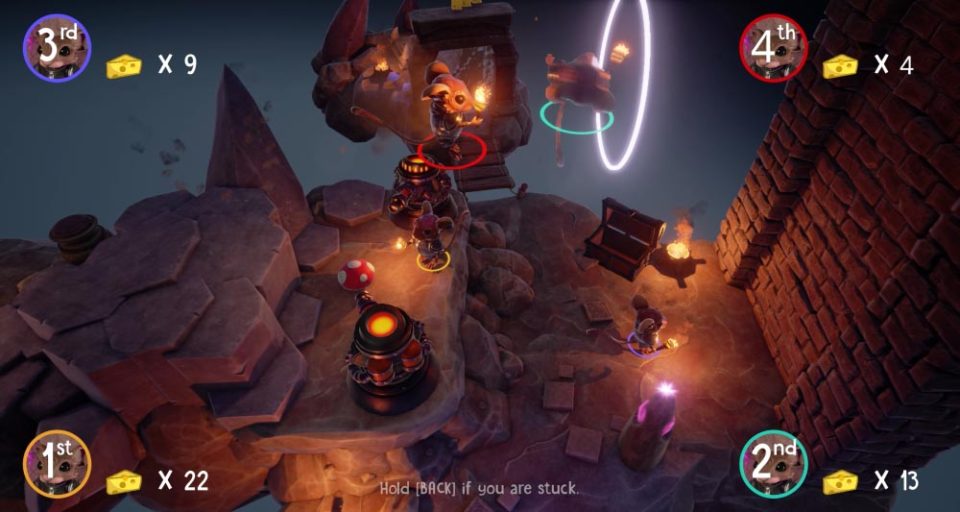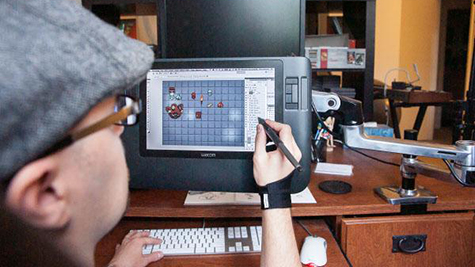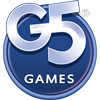BalanCity is a goofy mixture between the oldschool Sim City and Jenga. In this physical city builder you need to make a towering metropolis over a treacherous seesaw. You can build houses, offices, parks, transportation, landmarks and more. Eventually, disasters will hit your city, so you must have your emergency services ready to act. Citizen approval is also a thing you must take care of if you do not want your people to start rioting and burn the city down. There is a Free Build Mode as well as Challenges and Scenarios where you must build real life metropolis with their famous landmarks.
main
ContributionsDevelopmentIndie
Mind the Trap: How To Engage Those Who Haven’t Played Yet
During the last weeks of July, our team of Dissonance Entertainment has been hit by a whirlwind of exciting events. Mind the Trap won the Best Multiplayer Game award and was nominated for Best Game Design at the Casual Connect 2016 trade fair. In addition to that, we locked in meetings with publishers, got approached by freelancers and marketers, got the game Greenlit after nine days on Steam, and for the first time had a post hit the front page of Reddit with over 7000 up-votes.
ContributionsDevelopmentPostmortem
Bringing Illustrations to Life: The Relationship Between Illustration and Interactive Animation
Morphopolis is a hidden object adventure game set in a fantastical insect world, by Micro Macro Games, and is a collaboration between illustrator Ceri Williams and animator/programmer Dan Walters. The player takes the role of an aphid grub that changes form through a cannibalistic control of dead insects in their quest to rescue their companion. Dan explains how they brought their vision to life.
An Illustrated World
The most powerful element of Morphopolis is the idea of entering an illustrated world. The ability to control, move, and interact with an illustration instantly transforms the player from observer to protagonist. Authorship is shared as the illustration changes, offering the viewer a much deeper and involved experience. In return, the responsibility of interaction must be accepted and the pace must be controlled. Interaction is distinctly different to observation.
When Ceri Williams and I started Morphopolis, we wanted to create a game for people who loved illustration. This worked really well, as not only were we essentially creating a game for ourselves, but we could engage with like-minded people, and offer interactivity to a traditionally static discipline. There were games we loved and admired (Machinarium, The Tiny Bang Story), and appreciated the importance of a illustrated identity. The style of the game had to be our own.
All the illustrations of our game were done by hand, with a set type of ink drafting pen on tracing paper, to ensure consistency between drawings. The hand-drawn style was partly because of our ambition to create something personal, where the hand-drawn aesthetic creates a sense of care and process. The larger factor was probably that Ceri is a traditional-type illustrator, having not created illustration digitally before. All illustration was created to the same scale, then digitally reduced when added into the game. Ink wash textures were created to add texture to the white bodies of the graphics, while much of the color is added in Photoshop.
Feeling Inspired
The goal was to create originality. To do this, I wanted to close my eyes to the game world and look else-where. I approached Ceri with the project because he was not a games person - he lived entirely in the world of design, architecture, and illustration. He has high creative output and because of this, he thinks a lot about his own work, perhaps living in his own world more than anyone else’s. There is a unique character to his work that I wanted to introduce to gamers.
While we started off looking at a large pool of inspiration and reference material, this was eventually discarded in favor of Ceri’s natural style. There was a huge expense in creating a new style in terms of work velocity. In the end, this resulted in a more personal product. Narrative and animation were also bigger inspirations than games and game-play itself. Animated films such as Princess Mononoke played the greatest inspiration, and it was the concept of bringing a part of that type of world and narrative to interactive media that drove the project.
So Much to Do, So Little Time
As with many projects, the significance of the amount of content required was grossly under-estimated, and I would never recommend such a content-centered game ever be attempted by such a small team. Combined with a basis of narrative, the initial project goals and timescale were unrealistic. After our initial commitment of eight man-weeks, we had thrown a lot out and had little that represented a game, but did have the basis of a tool-set and design that was very accurate and the work ahead seemed mostly a content-creation exercise.
The programming requirements were also surprisingly high. The game has been built for full HD graphics, which, when considering that the scenes are layered and composed of many parts, becomes a very demanding problem. There is also a huge variety and customization of behavior which has had a high programming cost.
As for design, deadlines and promotion had the greatest effect on progression. We exhibited at Rezzed this summer, and the deadline of presenting our game was a huge motivator. Since then, we have continually made sure we had others depending on us in order to make sure there was always a little bit of pressure.
Building the Right Tools
There is a technical nature to interactive media that requires an awareness of real-time graphics and the limitations of computers in this regard. Images must be of certain sizes and shapes, scenes must be composited in a certain way, and animations must be built with play-back in mind. We were able to develop tools that allowed us to work the way we wanted to, and automated many of the technical tasks involved. Building our own art pipeline was critical in defining Morphopolis‘ personal style and visual nature.
We developed two custom tools - an animation authoring tool, and a scene authoring tool. The animation tool is a well-featured utility that allows us to quickly assemble and animate our in game objects. This tool has proven to be fantastic; we got the feature set right, and it has been very fast to use. The scene tool rationalizes merging the many different types of object and behaviors into a single scene. This is a big tool, but breaks tasks down into layers, meaning you only have to think about a single aspect of a scene at a time when authoring the content, making it easier to get to grips with the tool.
In terms of design, we broke the game down into four main player interactions, allowing us to focus on these events. This hugely simplified the work required to design the game, transferring the onus of variation to the game content.
What Next?
The final result is shaping into a product we are really proud of. The direction of the game has hugely changed, and the nature of narrative in the game has shifted from our original direction. We have had to remain agile as the game has grown, and been reactive to feedback and play testing. This process will continue up to and probably long after release.
For more information on Micro Macro Games, like them on Facebook, or follow them on Twitter. Morphopolis is now available here for Windows, Mac OSX, Linux, Android, iOS, Windows Phone 8, Blackberry and Kindle Fire.
ContributionsPostmortem
The Story of Crypt Run
Lost Decade Games got its name from the perceived notion that its two founders had spent 10 years in the wrong career. Geoff Blair and Matt Hackett share similar backgrounds; their previous experience includes senior engineering roles at Yahoo! and gameplay aggregator Raptr. The word “decade” also tends to make gamers, like themselves, think fondly of classic gaming experiences. But its future was put at risk when its realtime multiplayer game was cancelled. Crypt Run is their attempt to salvage the wreckage and turn it into the best single player experience they can make. Matt describes their experience.

A Doomed Contract
It was July 2012 when a local startup reached out to us to work on a realtime multiplayer game in the browser. At that time, we’d only been independent for about six months and were still relatively inexperienced game developers. This project also came with many difficulties. Realtime, socket-based connections in the browser were still quite new and somewhat unstable at the time. Our partner had implemented the lockstep protocol, which was invented to handle the unique problems that RTS games face. But they wanted to push the envelope to improve their tech stack, so they requested an arcade-style action game.
The provided API only supported keyboard input, and had a lobbying system that required 2-10 players in a game session. So we had several unique challenges to face, and a tight deadline of only three months in which to do it. Given all of these constraints, we aimed to design the simplest game we could…at least at first.
Our initial design involved players controlling dwarves in a 2D obstacle course. Players explore a town, which is full of traps and bars. When players went into bars, they’d get drinks and become intoxicated. At the end of the time period, the drunkest player won! But this design had some issues, one of which was that we’re not big drinkers ourselves and couldn’t really relate to our own game. We felt like it was a fine idea in general, but just not for us. This, combined with us being undisciplined designers, obviously led to a bizarre robot crafting game inspired by Magic: The Gathering.

I blame myself for this. I pushed on this design because I felt it had merit, but I knew it was much too ambitious for a three month project. These days, I try to remember this mistake to help myself focus.
About halfway through development, we realized we’d never get this crazy game done on time. So we threw out all the designs we had and reduced the core engine down to just a shell of a realtime multiplayer game. Cutting so much definitely had an impact on us. We lost some confidence, and it took us a few days to get back into the development groove.
We decided to pivot back to medieval fantasy, because that’s what we know and love. Our inspiration at this point was to build a “realtime roguelike” that would play like standard roguelike dungeon crawlers, except realtime instead of turn-based, and multiplayer instead of single player. Early prototypes were very promising, and things were finally going smoothly.
As we built the game, we realized that dying was boring because you just had to sit there and watch other people play. Inspired by the Bomberman franchise, we came up with the idea that when you die, your spirit goes on, and you can still affect the game (albeit now in minor ways).
An early beta of this new game we called Crypt Run was ready for launch in January 2013, when we received some bad news…

Cancelled
Our partner informed us that they were pivoting away from providing a realtime multiplayer service. They were a very young startup, with brand new money, and they were trying to find their footing. They had no issues with the game we delivered. We still got paid, and we got to keep the rights to our game. Our relationship with them is fine, and there are no hurt feelings.
However, all the planning and preparation we’d done for the last few months was now moot. All of the ideas, marketing plans, and concepts we had bouncing around pretty much had to be thrown out. Almost everything depended on the multiplayer aspect, and that wasn’t something we were prepared to attempt ourselves.
Getting Back to Our Roots
The lion’s share of the Crypt Run source code was hacked to work with our previous partner’s SDK, and Geoff wasn’t happy with its architecture anyway. We decided to toss the vast majority of the game code and start from scratch. This increased our interest in retaining something from this cancelled project.
However, we decided to build on the artwork that we had. I had spent months creating art assets for monsters, swords, treasure, and more, and we felt like that was a valuable thing that we should utilize. Since our old game design depended heavily on the missing multiplayer element, we decided to get back to our roots by designing a spiritual successor to our first game Onslaught! Arena.

This was good. We’d been wanting to build a sequel to Onslaught! for many years; we had even put together a quick prototype for a sequel, but never found the time to fully explore it.
My art style had also changed drastically since then. Over the years, I moved away from pixel art, as it felt like the general gaming audience was growing fatigued with it. Instead, I moved towards smoother shapes like in Lunch Bug (2012) and Lava Blade (2013).
We felt that in order to be a substantially more compelling game, all Onslaught! Arena really needed was an exploration mechanic. If players could navigate the arena via doors that scrolled to other rooms, we’d have that easily. So we borrowed heavily from some of our classic favorites like Smash TV and the original Legend of Zelda.
Designing a game based on the Zelda dungeon framework can be a slippery slope. Additions like the map and compass become obvious, but we tried to design organically as much as possible. By adding bouncing axes, freezing ice swords, and unique monster behaviors, we hoped to make Crypt Run feel less like Zelda and more like an evolution of a genre. Yet this didn’t feel like enough. We wanted a feature that would really set Crypt Run apart, something that was unique and unexplored, at least in this genre. And then it came to us!
Death is Just the Beginning
It occurred to us to dig through our old, deprecated realtime multiplayer design documents to look for clues on which direction to go. We found the feature that lets players remain in the game when they die, and thought that it might be a fun mechanic to explore.
Our aim is to make this feature feel less like a “corpse run” that gamers might remember from World of Warcraft, and more like a whole new world, like from The Legend of Zelda: A Link to the Past. Unfortunately, this part of the game is largely unfinished. Almost immediately after getting it into the game, we pivoted to work fulltime on a Kickstarter campaign and our first ever live demo!
Kickstarter and California Extreme

California Extreme is an annual pinball and arcade celebration in the California bay area. It’s basically a huge room packed with arcade cabinets and pinball machines, all set on free play. It’s magical.
Although we weren’t quite ready to demo Crypt Run, we felt that doing a live demo at a popular conference was a great way to launch a crowdfunding campaign. We were right! On our first day, $1,760 worth of pledges came in and by the end of the weekend Crypt Run was 58 percent funded. Over this tiring but super fun weekend, we watched hundreds of gamers play Crypt Run, added 50 new mailing list signups, met a ton of great people, and made some promising connections. We even met a business developer from Sony!
If you’d like to work with us, we’re particularly interested in bringing Crypt Run to consoles. Eventually, we plan to launch on mobile as well, so if you’re in a position to help indies with marketing or publishing, please do get in touch. Game on!
Crypt Run‘s Kickstarter was successfully funnded and is set to launch on Windows, Mac, and Linux this Halloween. Stay in touch with Lost Decade Games through Twitter and Facebook, as well as Lostcast, their game development podcast.










